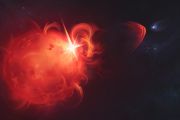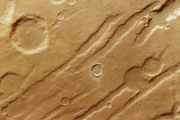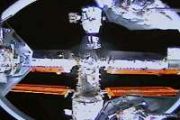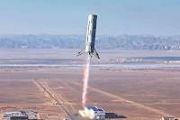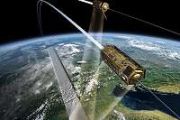
Copernical Team
Webb spotlights gravitational arcs in 'El Gordo' galaxy cluster
 A new image of the galaxy cluster known as "El Gordo" is revealing distant and dusty objects never seen before, and providing a bounty of fresh science. The infrared image, taken by NASA's James Webb Space Telescope, displays a variety of unusual, distorted background galaxies that were only hinted at in previous Hubble Space Telescope images.
El Gordo is a cluster of hundreds of galaxies
A new image of the galaxy cluster known as "El Gordo" is revealing distant and dusty objects never seen before, and providing a bounty of fresh science. The infrared image, taken by NASA's James Webb Space Telescope, displays a variety of unusual, distorted background galaxies that were only hinted at in previous Hubble Space Telescope images.
El Gordo is a cluster of hundreds of galaxies DLR harnesses 3D Printing for efficient production of spaceflight components
 The German Aerospace Center (DLR) is looking into ways to make space propulsion systems more cost-effective and reusable. The emphasis of their investigation lies in the 3D Printing for Low-Cost Space Components (3D-LoCoS) project. This project seeks to enhance the techniques of metal-based additive manufacturing, essentially 3D printing processes. This advancement will allow for the swifter, mo
The German Aerospace Center (DLR) is looking into ways to make space propulsion systems more cost-effective and reusable. The emphasis of their investigation lies in the 3D Printing for Low-Cost Space Components (3D-LoCoS) project. This project seeks to enhance the techniques of metal-based additive manufacturing, essentially 3D printing processes. This advancement will allow for the swifter, mo Webb Telescope unmasks Ring Nebula's cosmic dance
 NASA's James Webb Space Telescope (JWST) has released exquisite new visuals of the famed Ring Nebula, or Messier 57, to the world. The unveiling was done by a global consortium of astronomers, a team steered by Professor Mike Barlow of UCL, UK, Dr Nick Cox of ACRI-ST, France, and with contributions from Professor Albert Zijlstra of The University of Manchester.
The Ring Nebula, a luminous
NASA's James Webb Space Telescope (JWST) has released exquisite new visuals of the famed Ring Nebula, or Messier 57, to the world. The unveiling was done by a global consortium of astronomers, a team steered by Professor Mike Barlow of UCL, UK, Dr Nick Cox of ACRI-ST, France, and with contributions from Professor Albert Zijlstra of The University of Manchester.
The Ring Nebula, a luminous MSU scientists help discover the highest-energy light coming from the sun
 Sometimes, the best place to hide a secret is in broad daylight. Just ask the sun.
"The sun is more surprising than we knew," said Mehr Un Nisa, a postdoctoral research associate at Michigan State University. "We thought we had this star figured out, but that's not the case."
Nisa, who will soon be joining MSU's faculty, is the corresponding author of a new paper in the journal Physi
Sometimes, the best place to hide a secret is in broad daylight. Just ask the sun.
"The sun is more surprising than we knew," said Mehr Un Nisa, a postdoctoral research associate at Michigan State University. "We thought we had this star figured out, but that's not the case."
Nisa, who will soon be joining MSU's faculty, is the corresponding author of a new paper in the journal Physi New exoplanet discovery builds better understanding of planet formation
 An international team of scientists have discovered an unusual Jupiter-sized planet orbiting a low-mass star called TOI-4860, located in the Corvus constellation.
The newly discovered gas giant, named TOI-4860 b, is an unusual planet for two reasons: stars of such low mass are not expected to host planets like Jupiter, and the planet appears to be particularly enriched by heavy elements.
An international team of scientists have discovered an unusual Jupiter-sized planet orbiting a low-mass star called TOI-4860, located in the Corvus constellation.
The newly discovered gas giant, named TOI-4860 b, is an unusual planet for two reasons: stars of such low mass are not expected to host planets like Jupiter, and the planet appears to be particularly enriched by heavy elements. NASA's LunaH-Map mission ends, validates science instrument performance
 NASA's LunaH-Map (Lunar Polar Hydrogen Mapper) mission, a briefcase-sized lunar orbiter that launched as a ride share on NASA's Artemis I mission last year, has ceased operations after successfully demonstrating its neutron spectrometer can detect water and ice at the lunar surface.
The LunaH-Map CubeSat was designed to map ice deposits across the Moon's South Pole as part of NASA's SIMPLE
NASA's LunaH-Map (Lunar Polar Hydrogen Mapper) mission, a briefcase-sized lunar orbiter that launched as a ride share on NASA's Artemis I mission last year, has ceased operations after successfully demonstrating its neutron spectrometer can detect water and ice at the lunar surface.
The LunaH-Map CubeSat was designed to map ice deposits across the Moon's South Pole as part of NASA's SIMPLE Daily records of atmospheric temperature with Perseverance
 Atmospheric temperature is a meteorological variable of daily concern to humans. Temperature also has a major impact on Perseverance mission operations (e.g. temperature sensors are distributed throughout the rover to monitor its thermal performance). In addition, temperature data are key to the mission's scientific investigations of the atmosphere. The Mars Environmental Dynamics Analyzer (MEDA
Atmospheric temperature is a meteorological variable of daily concern to humans. Temperature also has a major impact on Perseverance mission operations (e.g. temperature sensors are distributed throughout the rover to monitor its thermal performance). In addition, temperature data are key to the mission's scientific investigations of the atmosphere. The Mars Environmental Dynamics Analyzer (MEDA Can we see Mars' Breath in the Winter Cold: Sols 3907-3908
 Earth planning date: Wednesday, August 2, 2023: We don't have a lot of power to play with today, so we have to be careful about how much time we give the different activities. As Arm Rover Planner, I got to sequence the contact science activities today.
We start this two-sol plan with a nap to save up power. After waking up in the afternoon, we do a short block of imaging. Mastcam is takin
Earth planning date: Wednesday, August 2, 2023: We don't have a lot of power to play with today, so we have to be careful about how much time we give the different activities. As Arm Rover Planner, I got to sequence the contact science activities today.
We start this two-sol plan with a nap to save up power. After waking up in the afternoon, we do a short block of imaging. Mastcam is takin Curiosity faces its toughest climb yet on Mars
 On Aug. 5, NASA's Curiosity rover will notch its 11th year on Mars by doing what it does best: studying the Red Planet's surface. The intrepid bot recently investigated a location nicknamed "Jau" that is pockmarked with dozens of impact craters. Scientists have rarely gotten a close-up view of so many Martian craters in one place. The largest is estimated to be at least as long as a basketball c
On Aug. 5, NASA's Curiosity rover will notch its 11th year on Mars by doing what it does best: studying the Red Planet's surface. The intrepid bot recently investigated a location nicknamed "Jau" that is pockmarked with dozens of impact craters. Scientists have rarely gotten a close-up view of so many Martian craters in one place. The largest is estimated to be at least as long as a basketball c Unraveling river pathways on Earth and Mars
 In a groundbreaking analysis, scientists from Tulane University have delved deep into the winding paths of rivers on both Earth and Mars. This study, recently published in Nature Geosciences, aims to understand how climate change influences the shifting paths of these meandering rivers.
Dr. Chenliang Wu, a postdoctoral researcher with Tulane University's School of Science and Engineering,
In a groundbreaking analysis, scientists from Tulane University have delved deep into the winding paths of rivers on both Earth and Mars. This study, recently published in Nature Geosciences, aims to understand how climate change influences the shifting paths of these meandering rivers.
Dr. Chenliang Wu, a postdoctoral researcher with Tulane University's School of Science and Engineering, 



